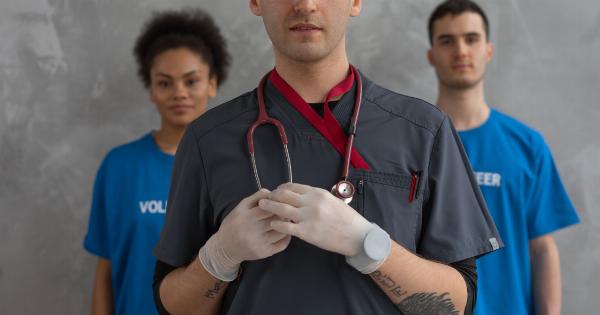When it comes to healthcare, patients put their trust and lives in the hands of medical professionals.
Doctors, in particular, are expected to possess a high level of expertise and accuracy in diagnosing illnesses and providing appropriate treatment plans. However, not all doctors live up to these expectations. In some cases, a doctor’s track record may reveal a concerning pattern of misdiagnoses, raising serious concerns about patient safety and the quality of care provided.
Understanding the Impact of Misdiagnosis
Misdiagnosis refers to the incorrect identification of a patient’s illness or medical condition, leading to inappropriate or delayed treatment.
This can have severe consequences, as patients may receive unnecessary treatments, experience unnecessary discomfort, suffer from worsening conditions, or even face life-threatening situations.
Misdiagnosis can occur for various reasons, such as inadequate medical knowledge, errors in interpreting test results, failure to conduct comprehensive examinations, or even a lack of attention to patients’ symptoms and medical history.
While mistakes can happen occasionally, a doctor with a track record of misdiagnoses raises significant concerns about their competence and ability to provide safe, reliable care.
Examining Cases of Misdiagnosis
Several high-profile cases have shed light on doctors with a concerning number of misdiagnoses.
These cases reveal the potential dangers associated with misdiagnosis and emphasize the urgent need for improvements in healthcare practices and patient safety protocols.
The Root Causes of Misdiagnosis
Understanding the underlying factors that contribute to misdiagnosis is crucial for preventing such incidents from recurring. While individual doctors may differ in their approach and skills, some common causes of misdiagnosis can be identified:.
1. Lack of Time and Resources
In today’s fast-paced medical settings, doctors often face time constraints and limited resources.
This can lead to oversights, rushed examinations, and a reduced ability to perform comprehensive diagnostic evaluations, increasing the risk of misdiagnosis.
2. Systemic Issues
Misdiagnosis can also be attributed to systemic issues within the healthcare system.
These may include understaffed medical facilities, inadequate training and supervision of doctors, fragmented health records, and lack of access to necessary diagnostic tools. Addressing these systemic issues is crucial to improving patient safety.
3. Cognitive Biases
Doctors, like all humans, are susceptible to cognitive biases that can influence their judgment and decision-making processes.
Confirmation bias, for example, can lead doctors to focus on information that confirms their initial diagnosis while disregarding contradictory evidence. Recognizing and addressing these biases is essential for accurate diagnoses.
4. Communication Breakdown
Effective communication between doctors, patients, and other healthcare professionals is vital for accurate diagnoses. Miscommunication, incomplete medical histories, and fragmented information sharing can all contribute to misdiagnosis.
Improving communication protocols and fostering collaboration can help prevent such breakdowns.
The Consequences for Patients
The potential consequences of misdiagnosis for patients are both physical and psychological. Delayed or incorrect treatment can lead to disease progression, prolonged suffering, and avoidable complications.
Patients may undergo unnecessary surgeries or medical interventions, resulting in physical harm and increased medical expenses. Moreover, misdiagnosis can erode patients’ trust in the medical profession, leading to anxiety, emotional distress, and a reluctance to seek timely medical care in the future.
Preventing Misdiagnosis: Steps Forward
Addressing the issue of misdiagnosis requires a multi-faceted approach involving healthcare professionals, administrators, policymakers, and patients. Some potential steps forward include:.
1. Continuing Medical Education
Ensuring that doctors have access to ongoing medical education and training plays a critical role in updating their knowledge and skills.
Staying abreast of new research, diagnostic techniques, and treatment options helps reduce the risk of misdiagnosis.
2. Enhanced Collaboration
Promoting collaboration among healthcare professionals, including physicians, nurses, and specialists, improves information-sharing and comprehensive patient evaluations.
Integrated healthcare systems and enhanced communication channels can facilitate this collaboration.
3. Improved Diagnostic Procedures
Developing and implementing standardized diagnostic procedures can help reduce the risk of misdiagnosis. Clear guidelines for conducting thorough examinations, ordering necessary tests, and interpreting results aid doctors in making accurate diagnoses.
4. Implementing Technology Solutions
The adoption of new technologies, such as electronic health records, decision support systems, and artificial intelligence, can help mitigate the risks of misdiagnosis.
These tools can aid doctors in data analysis, identifying patterns, and making informed decisions.
5. Encouraging Patient Engagement
Empowering patients to actively participate in their healthcare journey is crucial for early detection and prevention of misdiagnosis.
Educating patients about their conditions, symptoms, and treatment options enhances their ability to provide accurate information, ask relevant questions, and request second opinions if necessary.
The Way Forward
While misdiagnosis by a doctor with a track record of errors is undoubtedly alarming, it highlights the need for significant improvements in the healthcare system.
By addressing the root causes of misdiagnosis, enhancing patient safety protocols, and promoting a culture of continuous learning, the medical community can strive towards better diagnostic accuracy and improved patient outcomes.
Conclusion
Misdiagnosis by a doctor with a concerning track record raises significant concerns about patient safety and the quality of care provided.
Understanding the causes and consequences of misdiagnosis is crucial for preventing such incidents and improving healthcare practices.
By implementing measures such as ongoing medical education, enhanced collaboration, improved diagnostic procedures, technology solutions, and patient engagement, we can work towards a healthcare system that prioritizes accurate diagnoses and optimal patient care.



























